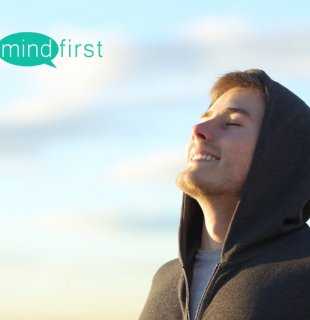Breathe to relax and reduce anxiety

Much has been written about breathing. It's never too much. Breathing is perhaps the most complete expression of our existence, and it is directly related to our behavioural, physiological, and emotional states. It is an endogenous witness to everything we are, feel, and do, as well as a powerful intervening force.
It is the only vital function that is either directly voluntary or involuntary controlled by the nervous system. Since our focus is on the voluntary control of breathing, a few brief lines on how it happens without our conscious awareness, that is, its involuntary control, are still necessary.
Breathing is controlled involuntarily by neural pathways in the autonomic nervous system (ANS). It is independent of our will and conscience, and its primary function is to maintain the body's internal balance and organ function regulation in check. This work is accomplished through the coordination of the ANS's two antagonistic components: the sympathetic nervous system, which causes an accelerated "fight or flee" physiological response (increased sweating, increased heart rate, increased blood pressure, and dilation of the pupils), and the parasympathetic nervous system, which, in general, acts in opposition to the sympathetic nervous system, reversing the effects of the fight or flee response (decreased sweating, decreased dilation of the pupils), it is sometimes referred to as the "rest and digest" system due to its slower and smoother nature.
Voluntary breath control occurs when we focus our attention on the breathing pattern and includes three key elements: awareness of the act of breathing, monitoring of physical sensations, and a sense of greater self-knowledge and self-control. It ranges from breathing cessation (no oxygen consumption) to hyperventilation (excessive oxygen consumption).
We want to draw your attention to voluntary control of breathing because, given the bidirectional relationship between breathing and emotional state, its benefits are numerous, highlighting the reduction of anxiety and the promotion of a state of relaxation. At the same time, it can help you become more aware of your body's sensations and focus on the present moment.
How to practice?
Abdominal breathing and meditation breathing are two breathing awareness exercises we recommend. You can do any of them sitting or lying down, calmly, while maintaining your natural breathing rhythm and preferably inhaling through your nose (in the nasal cavities, the air that enters is filtered and heated).
Start by placing your feet apart (and parallel to the floor), and if you're sitting, try to notice the spine stretching by moving the trunk a little from left to right in small movements, allowing it to naturally stop in the centre. Deep observation liberates us. Feel the spine lengthening and the skull engaging in the cervical. The chin is parallel to the floor, promoting both a stretch and a relaxation.
Spend a few moments in silence, and if you want to go through a series of pleasant mental images... then direct your attention to your breathing...
Abdominal breathing
Respiração abdominal
Abdominal breathing allows for better oxygenation and better control of breathing rhythm.
Slow and deep breathing from the diaphragm (the abdominal muscle located under the lungs near the base of the ribs) promotes a state of relaxation, a slow heart rate, and physical muscle relaxation.
To perform abdominal breathing, place one hand on your chest and the other on the abdominal area. Begin the exercise with an exhalation that occurs naturally. Notice how the downward movement of the hand resting in the abdominal region emphasises the downward expansion of the chest cavity, and then allow air to enter the lungs by lifting your hand. As the air is expelled, notice how the area sinks and relaxes, as well as how your shoulders, chest, and abdomen unwind and relax. Pause for a few seconds before beginning a new breathing cycle.
Inhale slowly and gradually through the nose, directing the inspired volume to the base of the chest, stimulating the use of the diaphragm muscle; hold the inspiration for three seconds; exhale slowly and gradually through the mouth, eliminating all the air from the pulmonar alveolus. As you exhale, you may make a soft sound, a small noise that seems to to convey relief while also emptying your lungs to allow new air to enter.
Allow yourself a few minutes to take this breath.
Meditation breath
If you prefer, you can choose to let your mind follow the rhythm of the breath, taking care not to change its speed and rhythm.
Perceive and feel the air passing through the nostrils, down the trachea to the lungs, and then calmly retreating, carrying the air out the same way. Then return to focusing on the in-breath...... Feel the warm air as you exhale and the cool air as you inhale. Repeat this exercise for a few minutes.
When to practice?
These two exercises are simple and can be practiced whenever you feel signs of anxiety or the need to focus on the present moment.
Ana Lambeck, Clinical psychologist and psychotherapist
Bibliography
Payne, Rosemary A. (2009). Relaxation Techniques - A practical guide for health professionals. Lusodidact
Pina, J.A. Esperança (2009). Human Anatomy of Relationship. Lidel
2025 © MindFirst. All rights reserved. Developed by Fidelizarte.
